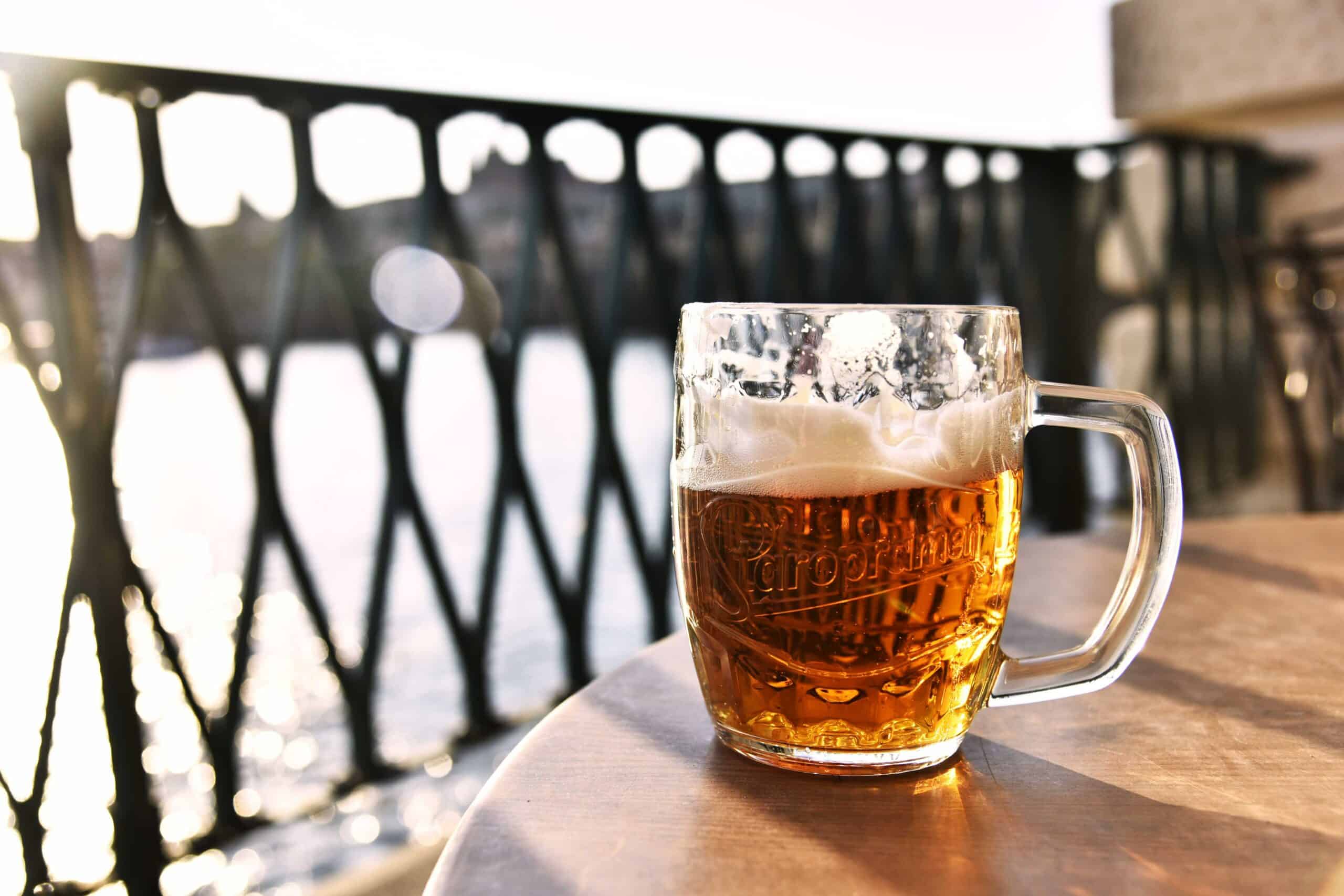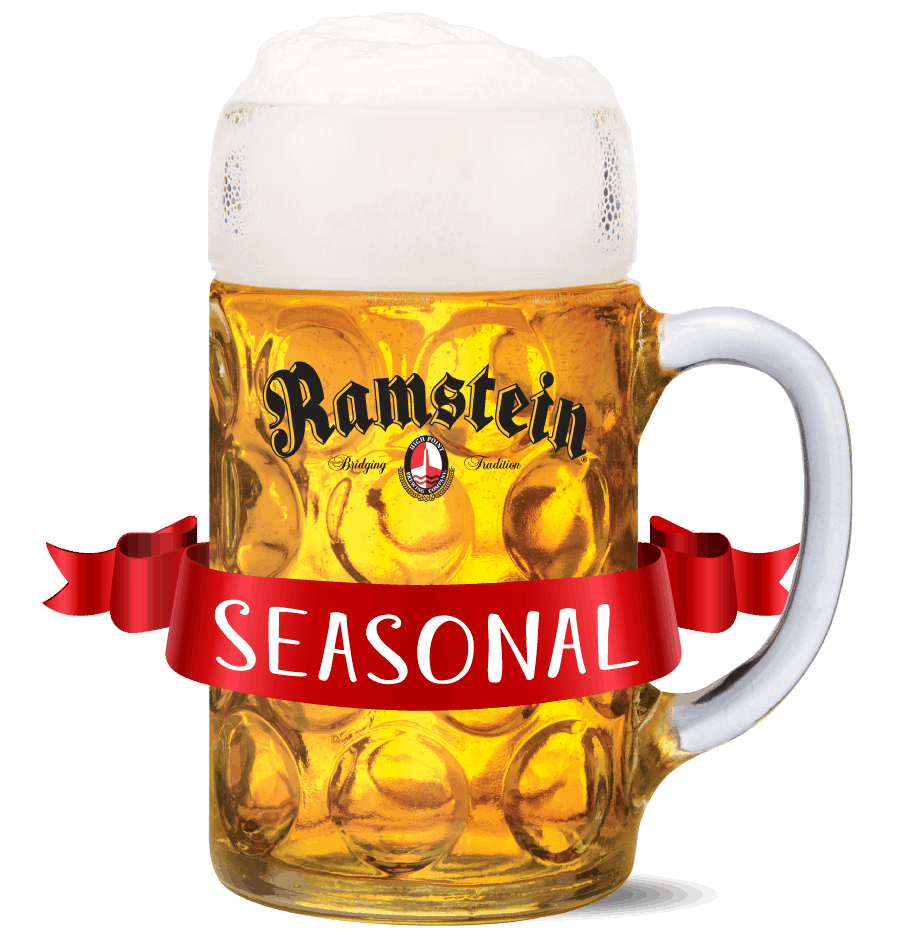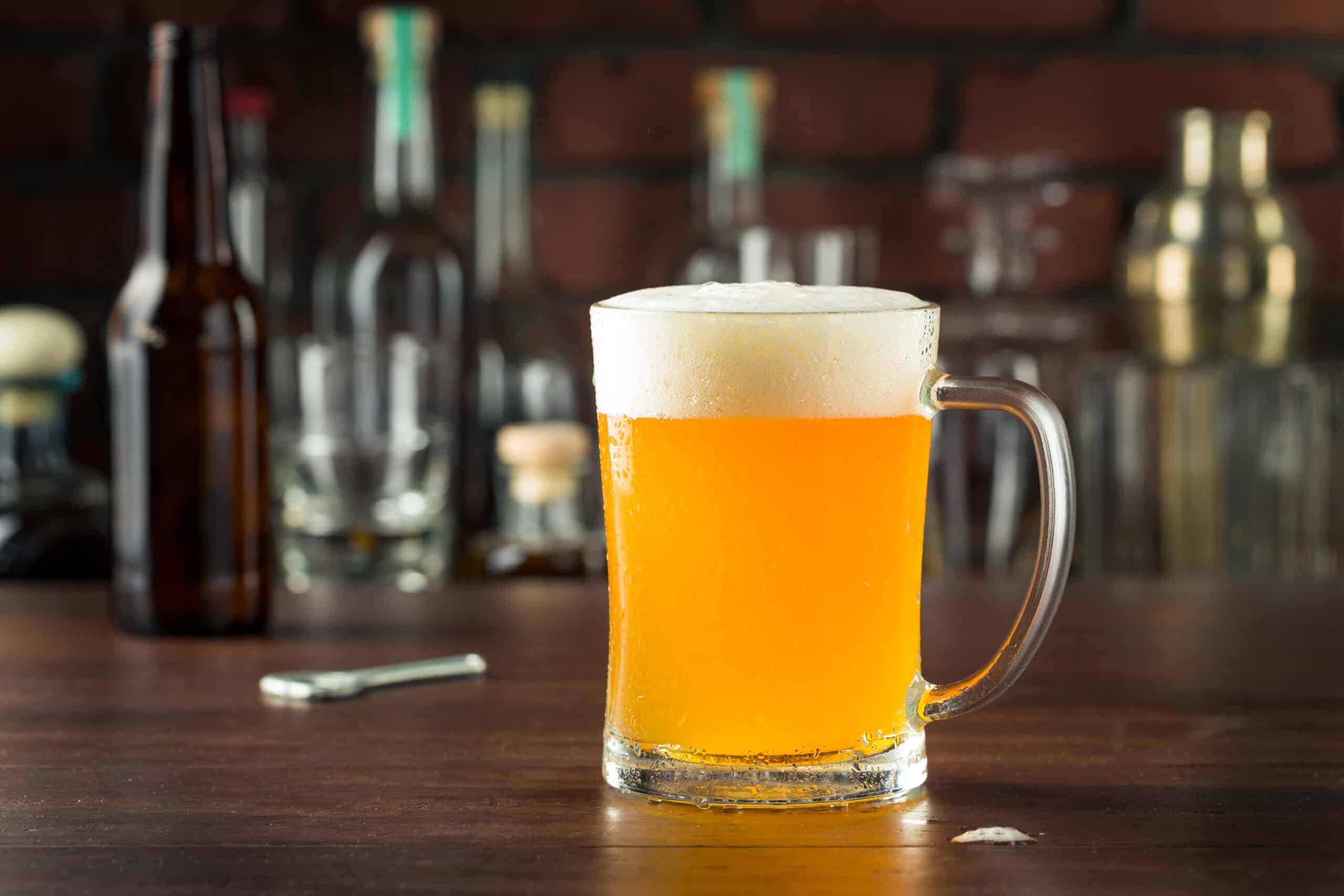- Beer Drop Review: Is It Worth Subscribing To? - May 17, 2022
- Best Italian Beer Guide: Top 15 Beers to Try - May 13, 2022
- Honey Malt Guide: What It Brings to The Table - May 13, 2022
Lager: it’s the most popular type of beer in the world– but so many may be missing out on some of the very best types of lager and just how much variety the beer style can offer, simply because they don’t really understand what it is.
In fact, 2020 data indicates that almost 87 percent of beer sales in the United States come from just four brands: Budweiser, Coors Light, Corona, and Michelob Ultra. While you’re likely quite familiar with these brands, in name at least, you may not be aware that, popularity aside, they all have one thing in common: these are all lagers.
Of course, part of the sales also points to another flashpoint: the popularity of mass-market beers. A 2019 USA Today article reported on the trend, showcasing that most Americans are opting for well-known brands, with these comprising the bulk of the market.
There was an interesting twist, though: craft beers continue to increase in popularity, while mass-market beer interest appears to be on the decline. While this is a slow pattern of change, it does suggest that Americans are slowly becoming more choosy about their beer, but that doesn’t necessarily mean they aren’t still choosing lager.
In this Lager guide, I’ll discuss what a lager really is, and point you to different styles of lager– and some of my favorite picks– so you can see what this type of beer has to offer.
What is the difference between beer and lager?
Almost all beer can be broken down into two main categories: ale and lager. That means all lager is classified as beer, but not all beer is classified as lager. Like all types of beer, lager is classified by the process from which it’s made and subsequent characteristics unique to it.

What makes a lager a lager?
Fermentation and Storage
A lager is unique due to its fermentation process. Lagers are fermented at cooler temperatures than ales, which results in bottom fermentation; all of the yeast’s activity happens at the bottom of the fermentation tank. The fermentation period tends to be longer than ale’s warmer fermentation processes. Lagers most commonly use saccharomyces pastorianius, a type of specialty lager yeast that is related to, but different from the yeast used for warm fermentation beers.
To mature, lagers are placed in tanks and stored at cool temperatures. In fact, the term lager comes from “lagern,” a German word that translates “to store.” In the past, lagers were traditionally left to store to ferment in caves to reach their peak flavor.
Ingredients
Lagers are brewed with the same basic ingredients as ales. Water, hops, yeast, and malted barley are the building blocks of the beer world. Some traditional beers stick to these four ingredients, while other craft beers experiment with other grains or added ingredients.
Many light American lagers will substitute some amount of rice or corn for a portion of the malted barley in order to achieve a lighter, crisper lager.
What are the different types of lager?
Not all lagers are created equal! Pale lager may be the most popular and commonly sold– but it’s by no means the only style of lager. Lagers range from fizzy, light American lagers to rich, dark schwarzbier and cover everything in between.
Amber Lager
Amber lager is a pleasing lager that strikes a balance between pale and dark lagers- perhaps one reason for its popularity. It’s commonly sold– nearly as common as pale lager– and American Amber Lager is known as a versatile and approachable beer of choice. Featuring a gold to light copper hue, amber lager has mild carbonation and a clear or slightly foggy appearance.
Most apparent in amber lager are the toasted and caramel notes from the malt, while hop bitterness is quite subtle. The soft caramel notes are accompanied by a short to medium finish and a moderate level of alcohol at an average of five percent. While some varieties of amber lager are given additions to enhance flavor, overall amber lager leans more sweet than bitter and is a mild, very drinkable beer type.

Vienna Lager
Vienna lagers and Vienna-style lagers are traditional lagers characterized by their malty sweetness and amber or copper color. They range from light to medium in body and are a very classic-tasting expression of an amber lager.
American Amber Lager
American amber lagers are very similar to Vienna lagers, though they tend to have a slightly more bitter hop character. They strike a nice balance between hoppy and malty, and still contain a lot of the toasted and caramel flavors amber lagers are known for.
Märzen
Märzen is another name for the traditional German-style Oktoberfest beer. Traditionally brewed in March and lagered until Oktoberfest, these beers are well balanced and light in body.
Food Pairings
The good news about amber lager is that it can be paired with most snacks and meals. Just like with amber ale, some of the best foods to pair with amber lager will enhance and match the toasted notes. Considered grilled or caramelized vegetables alongside mild meat or vegetarian protein. Due to the light caramel notes, opt for creamy desserts and sides, such as white cheeses, light custards, and ice cream.
My Picks
Interested in amber lager but not sure where to start? Here are a few of my favorites.
Wisconsin Amber – Capital Brewery
Lager is what brought attention to Capital Brewery, and this option features a harmony of signature caramel, roasted notes, balanced uncomplicated hop accents, with a rich hue and an overall pleasing presentation. Buy Here.

Vienna Amber Lager – pFriem Brewery
This Vienna-style lager is beautifully crafted, with an inviting copper hue and full toasted caramel notes, accented with less expected toffee and nuts. The malt brings that touch of inviting sweetness and offers a clean, crisp finish. Buy Here.

Eliot Ness Amber Lager – Great Lakes Brewing Company
Eliot Ness serves up an amber lager with a smooth, lighted toasted option. Hops are present, but not bold, and the mild flavor notes mean this amber lager could pair with just about anything. Buy Here.
Bock
Bock is a type of lager that some may have tried without knowing it. A bit less common than amber or pale lager, bock is considered one of the strongest styles of lager you can buy or make, and has German origins.
Ranging from a fainter copper to light brown, bock is known for robust malt flavors mingled with the present, but light, hop flavor. It has a heavier feel than amber or pale lagers and comes in several styles.

Eisbock
Eisbock originates from Bavaria and has a rather high alcohol content of around nine to fourteen percent, making it among the strongest lagers. The deep brown or deep copper hue is distinguished by reddish undertones and presents with a bold aroma and dried fruit notes of raisins and plums, with accents of chocolate and toasted flavors. A smooth and rounded finish accompanies barely-there hops, for a bold and rich but also sweet lager.
Doppelbock
Doppelback is also noticeably sweet and alcoholic, with an ABV of around seven to thirteen percent on average. The color ranges from gold to pale brown, sometimes with reddish undertones. The aroma is as bold as other bocks, with bold malt, toasted notes, and light hops. It also shares some of the fruit and chocolate flavors seen in Eisbock, though the finish is creamier (vs smooth) and a bit more malty and less fruity.
Maibock
Maibock, also known as heller bock or helles bock, is a lighter-hued bock (gold to amber) that has more present hops, and thus, is a little more bitter and less sweet than other bocks. With an ABV of six to seven percent, it’s also less alcoholic and more in line with other styles of lager. Malty notes are less present, leaving instead a little bit of both pepper-like and spicy notes, with a creamy, slightly dry finish.
Traditional Bock
Traditional Bock is strong, but not as strong as doppelbock or Eisbock, with an average alcohol concentration of six to seven percent. Hues range from copper to pale brown and present with classic malt and toasted notes, with hops, fruit flavors, and bitter notes barely detectable. Instead, toasted notes carry caramel with a sweet, but not too sweet smooth finish.
Food Pairings
Of course, food pairings vary a bit based upon the specific style of bock, but as a general rule of thumb, this style of lager pairs best with food that brings out its sweetness– but also balances it. Aged cheese, roasted, and even fried fish are natural pairings. Meat-based dishes or vegetables with honey, syrup, or related glaze also work well.
My Picks
Interested in trying a bock? It may be a less explored lager for Americans, but if you enjoy a malty beer with a robust finish, these options are great places to start.
Schokolade Bock
Perfectly paired with chocolate desserts and roasts, this decadent Bock features bold malt flavors with a full body for a rich, smooth finish– and just a hint of chocolate notes. Buy Here.

Ramstein Maibock, Summer Bock and Winter Wheat Doppelbock
Ramstein specializes in German craft beer and shines with its bock options. While some are seasonal, all are robust options and a great sampling of what a good German bock has to offer. Their winter doppelbock is rich and creamy, with black currant and clove adding festive notes to the classic malt and caramel flavors. Toffee and a complex balance of hops and malt is the highlight of their mailbox, while their summer-themed bock provides a clean and smooth finish, perfect for warmer weather. Buy Here.

Celebrator Doppelbock- Ayinger Brewery
Get ready to celebrate with this expressive doppelbock from Ayinger Brewery. It avoids being too sweet with a semi-dry finish while adding a complex balance of malty notes and hops with signature roast touches and a clean finish. Buy Here.
Dark Lager
Dark Lager is distinguished by its deep hue and signature, clean flavors. While you may assume that dark lagers are especially complex, they are actually beloved, in some ways, for their simplicity: hops and bitter flavors are almost absent, with a very malt-forward beer, sweetness, and a streamlined drink. That said, there are some varieties of dark lager that differ in terms of how that sweet malted notes play out.

American
Dark American Lager is especially mild, with caramel malt and light toasted notes– of all the dark lagers it’s considered the most subdued, with a subtle aroma and just a touch of sweetness from the malt, caramel, and roasted notes. Sometimes, coffee and cocoa accompany a medium or light body, with an uncomplicated, crisp finish. American dark lagers trend from dark amber to deep brown.
Munich Dunkel
Munich Dunkel hails from Bavaria and excels in complexity from roasted notes, but is not as robust and full as a traditional bock. Deep copper to deep brown, this type of dark lager features a balanced sweetness with gentle caramel, chocolate, nutty and toasted notes. While the finish is drier than some dark lagers, there is little to no bitterness, but rather an expressive zing from a slightly more alcoholic finish.
Schwarzbier
Schwarzbier is a German dark lager with bittersweet but mild notes of chocolate, vanilla, and a touch of coffee. Of all dark lagers, Schwarzbier has the most notable hops, but here the lightly bitter notes are well balanced with malted and roasted flavors, with a clean and refreshing finish.
Food Pairings
For the most part, dark lagers pair well with hearty, meat-based dishes, especially sausages, burgers, and even pizza. Red meat or any meat with a bit of sweetness pairs well with the malted notes. Stews and potatoes are also wonderful options, while some pasta would work as well.
My Picks
Dark lagers are also sometimes classified as black lagers. These options are mostly quite approachable and drinkable, but I’ve made sure to include both American and German picks.
Death and Taxes Black Lager- Moonlight Brewing
This American dark lager is a good place to start if you want a simple, clean, and well-crafted beer for entertaining. With coffee notes and a crisp, light finish, it’s a simple but well-loved option. Buy Here.

Dark Lager- Köstritzer Schwarzbier
This German dark lager features a medium body, which carries elegant male accents, a blanched and mild sweetness, and a clean finish. Buy Here.
Devils Backbone- Schwartz Bier

Roasted, coffee, and classic malt notes accompany a smooth finish with a medium body for a classic dark lager. Buy Here.
Continue reading our full guide to Devils Backbone.
Pale Lager
Pale lager is the most popular variety of lager– if you’ve tried beer, chances are that you’ve had some version of pale lager at least once, though chances are it’s an American pale lager. Pale lagers range from straw yellow to golden and are known to be especially clean and crisp, with a slightly more dry finish than other lager styles. Butterscotch flavors are not uncommon, and these styles of lagers are especially dependent on the use of starchy adjuncts. Depending on the variety, pale lagers range from quite mild to having more notable bitter accents.
American Light Lager
American versions of pale lager are especially known for their heavy concentration of corn or rice and their light body, especially light, clear hue, and are one of the most popular beers of all types, featuring big names in mass-produced beer, such as Budweiser and Miller Coors. Balanced malt notes with just a bit of bitterness, these are very drinkable and simple lagers.

Helles
This German pale lager took a while to gain popularity but has since been enjoyed especially in Munich and Bavaria, though abroad as well. A light gold hue accompanies a fuller body than other pale lagers, with a bit of sweetness and balanced hops, with bread-like flavor notes and that same clean finish.
Mexican Lager
There’s a lot of variety of beers that fall into the Mexican Lager, or Cerveza, category. Some made by larger corporations are light and fizzy, like American pale lagers, while others are darker and richer, closer to a Vienna-style lager. Most Mexican lagers are clear, well-balanced, and easy to drink.
Pilsner
Pilsner has its roots in Bavaria but has a multitude of styles: German, Czech, American, and European. German Pilsner is light straw to golden in hue and a bit more bitter, with earthier undertones. Czech Pilsner is fully golden, with a light and approachable, clean finish. Meanwhile, American Pilsner is noted for most closely embodying German styles, but with a heavier feel from the increased use of corn.
As a whole, Pilsner has a classic malty sweetness, balanced with medium hops with some mild caramel accents.
Food Pairings
As you can see, there is a good deal of variety when it comes to different styles of pale lager. In general, pale lager pairs well with the spicy and fried dish, as a largely crisp and refreshing, simple drink. Consider pub or game day good like wings, fries, hot dogs, or corn dogs, though fried seafood is also a great choice, and sandwiches or burgers would not be out of place.
My Picks
There are simply too many choices to tell you the best pale lagers to start with, so I’ve included a variety of different styles for you to sample.
Straub Brewery American Pale Lager
Pale yellow to golden hues with caramel notes and a smooth finish makes these beers American classics. Buy Here.
Gypsy Lager- Fordham & Dominion Brewing Company
This Helles style lager features an inviting, bright golden hue with a crisp finish and notable hop flavors while staying true to a clean finish. Surprising notes include lemon zest which brings a nice freshness to the light caramel and cracker flavors. Buy Here.
Jever Pilsner

This German-style Pilsner has a pale gold hue, with a few herb undertones for a crisp, refreshing finish with some bitterness from hops, but still true to a pale lager. Buy Here.
Frequently Asked Questions
Question: Is lager stronger than beer?
Answer: Lagers vary in how high alcohol they are. The quite popular light lagers, for instance, tend to be around four to six percent, meaning that the bulk of lager consumed is at average or only slightly above average. Make no mistake: some lagers are higher in alcohol concentration. But consider that the highest beers can reach an ABV exceeding ten, and even up to fourteen percent.
Question: Is Stella a lager or pilsner?
Answer: Stella is a pilsner beer and was originally produced in Belgium during the mid-1860s.
Question: What is a lager vs ale?
Answer: The main difference between lager and ale is that ale goes through a warm fermentation process, whereas lager goes through a cooler fermentation process. While there are many types of ale, as there is lager, ale, in general, has a fuller body, fruitier notes, and is a bit sweeter.
Final Thoughts
Lager comes in many varieties, from mass-produced beer to craft beer– suiting just about any taste you can imagine.
Read More Lager Beer Reviews and Guides:
